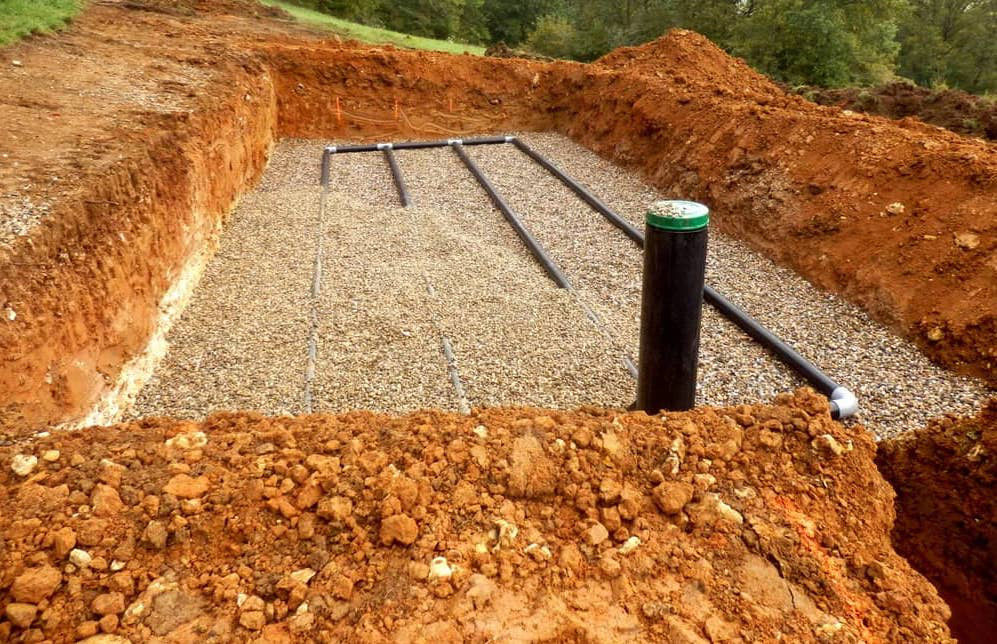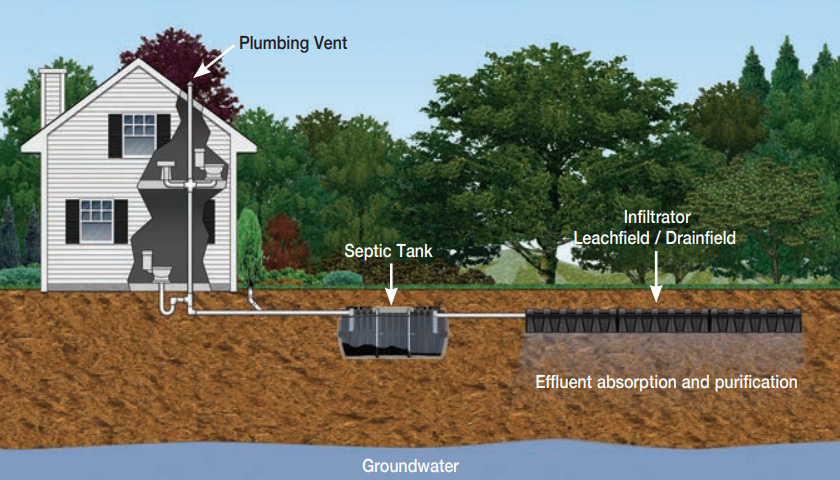For many people, the idea of septic tanks may be foreign. But for those that do utilize one, they are absolutely essential. If you have always lived in a home that is linked to the main sewage system, it’s likely that you have never even heard of a septic tank, much less understood what one is. In this article, we’ll explain what a septic tank is and how it functions.
What exactly are septic tanks?
An underwater sedimentation tank called a septic tank is used to treat waste water through drainage and biological decomposition. A septic tank treats wastewater from residential plumbing, including that from bathrooms, kitchen drains, and laundry, using natural processes and tried-and-true technology. The design of a septic tank system is rather straightforward. It is a subterranean, watertight container constructed of fiber glass, plastic, or concrete that is often rectangular or spherical.


Sludge and scum cannot exit a septic tank and enter the drain field region due to compartments in the tank and a typical T-shaped outlet. One kind of simple onsite sewage facility (OSSF) are septic tank systems, which simply offer little treatment. Septic tanks provide the safe disposal of wastewater for homes with inadequate drainage or those that are not connected to the main sewage network.
They function by gathering wastewater and excrement in a sizable subterranean tank; they are primarily utilized in rural regions. Septic tanks are typically constructed 50 meters below from the home. They typically consist of a tank that collects wastewater from an entrance line and two chambers or compartments. Septic tanks are not necessary for people who live in cities and towns because their sewage system will handle and transfer their waste water. This will be managed & maintained by a nearby water provider.
Any house can use water facilities as usual with a septic system. There are, however, additional safety precautions that must be followed. The septic tank will also require routine maintenance. Septic tank owners have an added responsibility to make sure their tank doesn’t harm the neighborhood’s ecology. For instance, if the drain field is overflowing with liquid, sewage may run to the ground surface or backups may occur in sinks and toilets.
How do septic tanks function exactly?

A septic tank will break down organic materials and remove solids and floatable debris (particularly oils and grease) from wastewater. Two pipelines will link a septic tank (for inlet and outlet). The intake pipe is used to carry household water waste to the septic tank where it is collected. The solid and liquid waste are kept apart for a sufficient amount of time here.
The exit pipe is the following pipe. Another name for it is the drain field. This line disperses the septic tank’s pre-processed wastewater into the surrounding land and waterways. After some time, waste water that has been collected will start to split into three levels. (As depicted in the picture up top) Grease and oils make up the top layer, which floats above all the garbage. This is referred to as “scum” frequently.
Waste materials and wastewater are both present in the middle stratum. Sludge is the third and bottom layer, which is made up of particles that are heavier than water. The bacteria in the tank do their best to decompose the solid waste, which then makes it possible for the liquids to separate and drain away with ease.
As part of routine maintenance, what is left at the bottom of the tank must be routinely removed. This is among the factors that make a septic tank merely a simple type of sewage treatment.
Three different kinds of septic systems
Conventional Septic Systems
There are two main types of conventional septic tanks in use today; the modern chamber septic system is more popular but also more expensive than the older graveled septic system. Septic tanks in conventional systems are fed by a line that runs from the building they are being utilized in. As the septic tank fills up, the water will ultimately rise to the level of the drainage pipe that runs to the drainage field, where the water is allowed to seep into the earth. To give the wastewater time to separate into a layer of sludge on the bottom and a layer of scum that floats on top, septic tanks are purposefully designed in vast proportions. Both the graveled system and chamber drain fields produce porous surfaces that let untreated water soak into the ground, where it is naturally cleaned of dangerous bacteria and viruses.
Low-Pressure Pipe Systems
If gravity won’t help you get your wastewater to drain where it should, thus this approach is frequently utilized in circumstances where the natural topography and orientation of the structure require that the drain field be positioned uphill from the tank. The only difference between this system and a traditional septic system design is the addition of a second tank inside the first septic tank. The wastewater in this tank is set up to be pumped out twice daily, allowing the effluent to soak into the soil as it passes through the drain fields.
Evapotranspiration System
An evapotranspiration septic system will be a fantastic solution in locations where the amount of evaporation greatly surpasses the level of precipitation, such as in a semi-arid or desert climate. There needs to be a system other than the traditional one because these kinds of climates typically don’t have enough layers of permeable soil to treat the wastewater.
An underground tank and drain field with an impermeable barrier instead of a porous surface make up an evapotranspiration septic system. The water can evaporate into the air and permeate the plants since the trench’s top is covered in mounded sand and vegetation. With this method, the wastewater can be treated in the sand without overflowing onto the dry ground. This technique can also be used in humid climates by altering the drain field to become permeable, which allows the water to soak into the soil.
Overview on how septic tanks work
1- One primary drainage line connects your home’s kitchen, bathrooms, and other plumbing fixtures to your septic tank.
2- The septic tank begins the process of storing the waste water underground. This needs to be held for a sufficient amount of time so that the solids sink to the bottom and the oil and grease float to the top.
3- The liquid wastewater (effluent) will then be able to depart the tank and enter the drain field after this procedure.
4- Pipes are used to dump this wastewater onto porous surfaces. These enable sewage to pass through the soil and filter.
5- Water that has percolated through the soil is eventually discharged to the groundwater after being absorbed, treated, and distributed by the soil.
6- Finally, the wastewater naturally removes hazardous coliform bacteria, viruses, and nutrients from the soil as it percolates there.
https://www.dtox.org/blog/what-is-a-septic-tank-and-how-does-it-work
https://www.knightscompanies.com/blog/septic/what-kind-of-septic-system-is-right-for-me/




